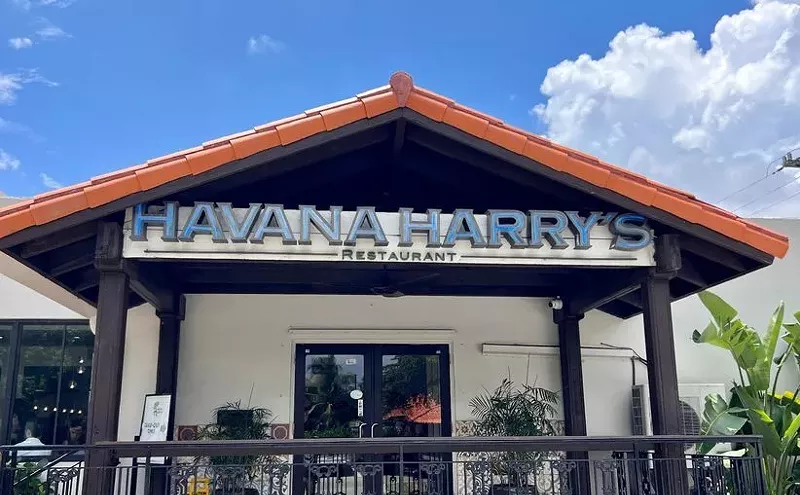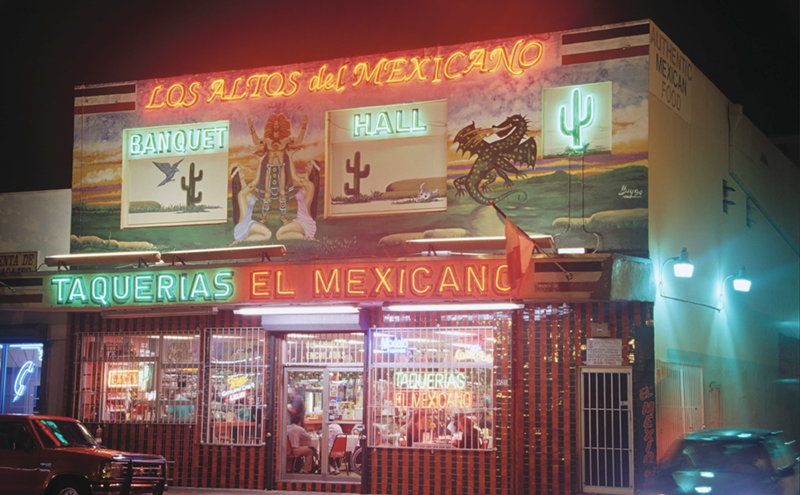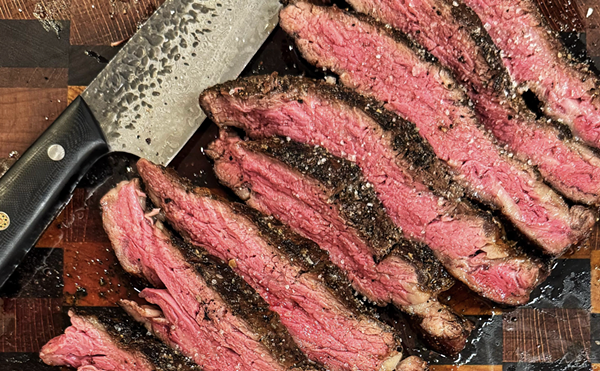Guests are greeted cordially by Bruno and his staff, the amiability furthered with complimentary glasses of sparkling prosecco and rounds of fresh ciabatta bread. The menu is a long, laminated, single-page printout categorized into salads, antipasti, pastas, and main courses. Meat-based antipasti include Parma prosciutto-wrapped cantaloupe; Parma and mozzarella cheese; and panzerotti, five minibuns of fried olive oil-based bread, each sandwiching a slice of Italian cold cut (including prosciutto and mortadella). These were tasty, but other components are needed to elevate them above bar snack. Hint: Mario Batali stuffs his panzerotti with chanterelles and mascarpone.
Most appetizers are $12, which makes the "grande antipasto" platter of four full-size starters an attractive deal — $25 for meats and $26 for seafoods. The selections change daily and barely anyone on site speaks English fluently, so it's best to approach it as though labeled "grande mystery platter" and enjoy the unforeseen. One evening the seafood sampler contained a pool of polenta topped with red wine-imbued calamari; anchovies and branzino marinated in olive oil and lemon juice; thin squares of tortilla española beside a duo of fried rice balls over tomato purée; and a warm medley of octopus, potatoes, kalamata olives, and "Roman capers" (the size of small olives and ripe with tangy flavor). This last dish is notable for its disregard of garlic, vinegar, and lemon juice, which permits the natural flavors to merge in a subtle, comforting fashion. Two caramelosi also came with the antipasti. This regional treat, prepared daily by Bruno's mother, features assorted fillings baked within little beggars' purses of parchment paper; on this occasion the caramelosi were plumped with shrimp and Taleggio cheese.
As it turned out, the antipasti platters weren't the only mysteries on the menu. Virtually every dish brought a surprise, none more so than "ravioli filled with grouper and porcini mushrooms with asparagus sauce." Silly me for expecting little pillows of pasta stuffed with flakes of fish and exuding the earthy aroma of porcinis. More pertinently, I eagerly anticipated a conceptually alluring asparagus sauce ladled on top. What I received were six dark squares of thick, chewy noodles (made with squid ink), each containing a pimple-size pocket of fish. The porcinis, if that's what they were, resembled vanilla specks in ice cream, and a coral-color sauce provoked me to ask the waiter what had happened to the asparagus. "No, that's marinara sauce," he said, the look on his face suggesting he was tempted to fetch a tomato and an asparagus spear from the kitchen to help me understand the difference. I have no problem with chefs switching ingredients, but the customer should be informed of such changes. And, just for the record, the sauce wasn't marinara but a nicely spicy tomato-cream.
Mezze maniche (half-sleeves), a pasta cut that resembles short rigatoni tubes, were impeccably firm to the bite, but the "four kind of Italian beacons" (meaning bacon, dry-cured pork jowls, and two types of pancetta) were really two types: pancetta and creamily fatty nubs of guanciale (the pork jowls). The dish's only other components were shreds of Pecorino cheese and a thin grind of black pepper. It would have been delicious had the pork been crisper, the pepper coarser, and the Pecorino more abundant.
Meat entrées are fairly straightforward: bacon-wrapped filet mignon, New York strip, a sizable Fiorentina steak, and a lamb chop "with herbs crust." Which herbs were used? If you answered none, you're catching on. The hefty double chop, ordered medium-rare and arriving well done yet juicy, was bereft of anything except salt and pepper. The accompaniment, cubes of eggplant softly baked in tomato sauce, was fresh but flatly seasoned. This, too, could have benefited from herbs, which were absent from every plate we sampled. Luckily the wine list is flush with reasonably priced bottles, so you can always rely on a glass of brash Sardinian red to perk up your palate.
The shocker concerning an order of "orata in potatoes crust" wasn't that the fish actually came with a potato crust — albeit one less crispy than a crpe — nor that it was yellowtail instead of orata, otherwise known as sea bream. Rather the skin side of the fleshy fillet still had its scales attached. Take it from me, scaling a fish with potatoes wrapped around it can get messy. A grilled array of carrots, onions, zucchini, and eggplant provided an apt, if uninspired, side.
Desserts are made on the premises and include tiramisu; a thin, dense, richly satisfying chocolate hazelnut torte; and a mille-feuille that resembled a Napoleon pastry after numerous toddlers finished playing with it — the flaky puff pastry slapped onto the plate with random dabs of whipped cream, Nutella, and raspberries.
For all its missteps, including occasionally sloppy service, Parioli is an easy place to root for. The Valbonesi family seem like genuinely nice folks who are working hard and sincerely trying to create an enjoyable dining experience. The interior, with its curved walls, terrazzo floors, dim lighting, and open kitchen, is simple yet stylish. The vibe is friendly, the menu appealing, and when the room fills up, Parioli exudes an effusive energy. Now it's up to chef Mauro Luise to instill some of that ebullience into the cuisine.












